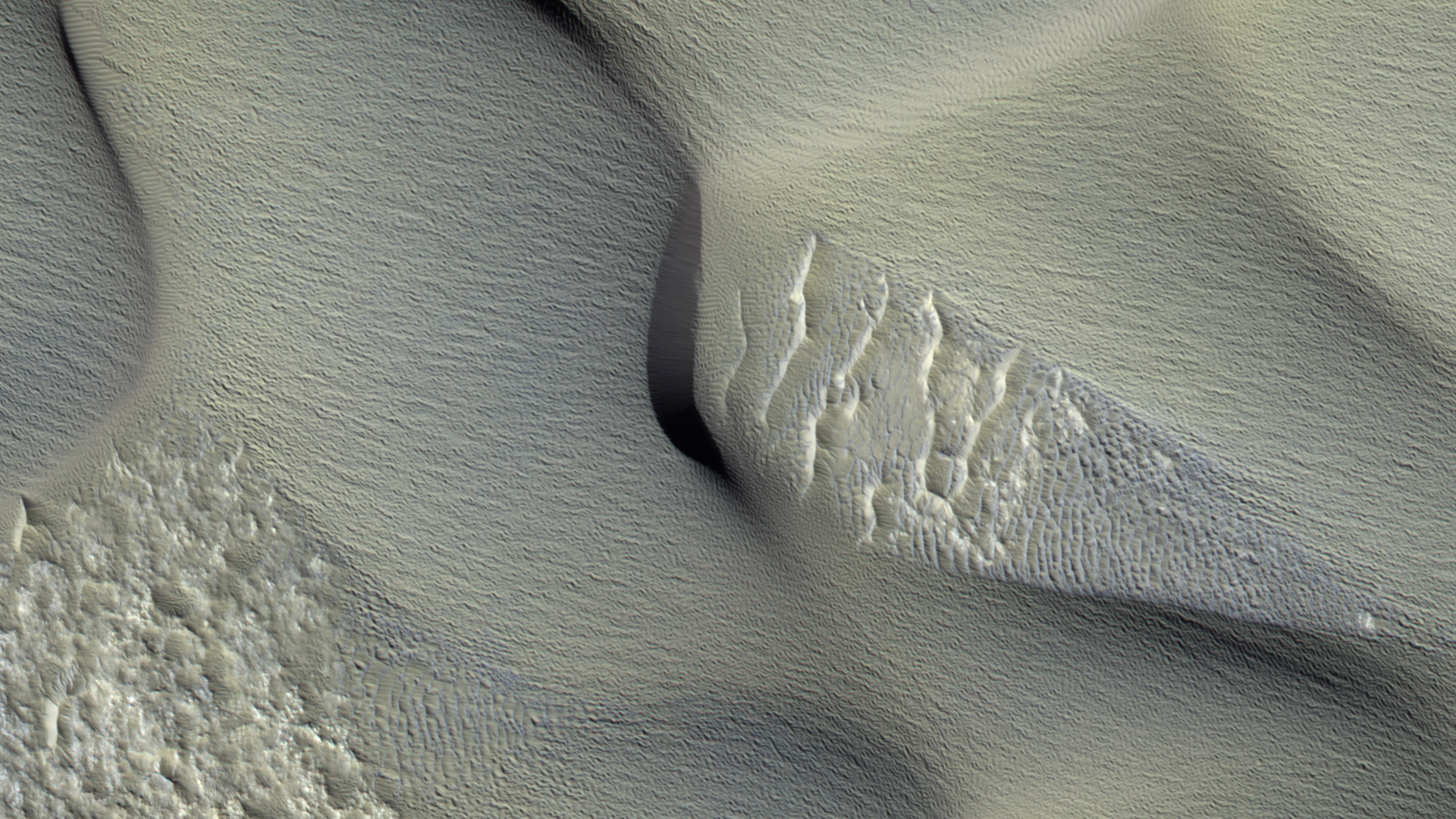Three types of windblown piles of stuff

Dune shadows
March 16, 2016
The wind paints
April 4, 2016
A Piece of Mars: The wind blows different sorts of sediment in different ways. Ultimately they pile up because some oddity in nature makes one spot accumulate more sediment than other spots, allowing that windblown pile of stuff to grow. Sometimes it’s because of the wind interacting with the shape of the pile, and sometimes it’s because of the trajectories of moving grains as the wind blows them along the ground. Here’s an example of three types adjacent to each other: 1) a big dune on the left (migrating towards the right), which is covered in 2) smaller ripples, and downwind of the big dune are 3) brighter intermediate-scale piles (that are surrounded by larger and, presumably, better-developed versions of the “smaller ripples”). (HiRISE ESP_044515_1620, NASA/JPL/Univ. of Arizona)




1 Comment
Nice! As we describe in our book “Dune Worlds” the Microsoft dune wallpaper (Namibia, probably) shows a dune slip face, with two generations of ripples… (and the slipface shows avalanche lobes)